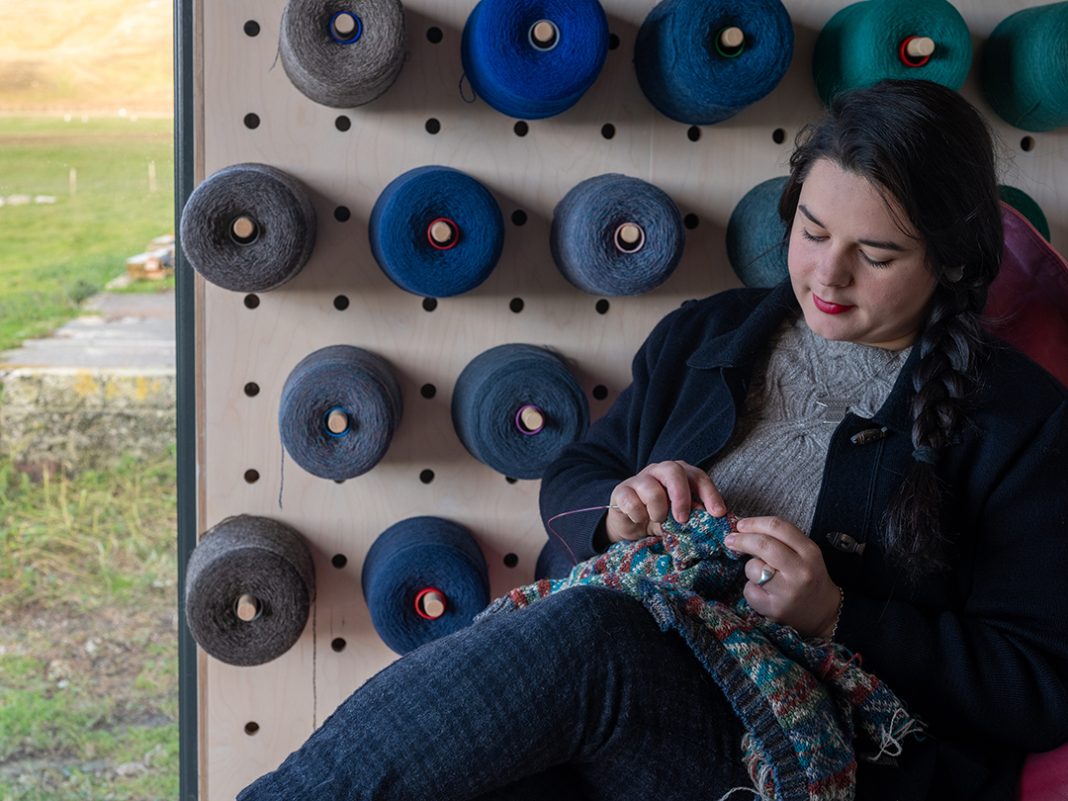Editor Catherine Coyle speaks to Marie Bruhat, a French textile artist from Fair Isle, the most remote inhabited island in the UK.
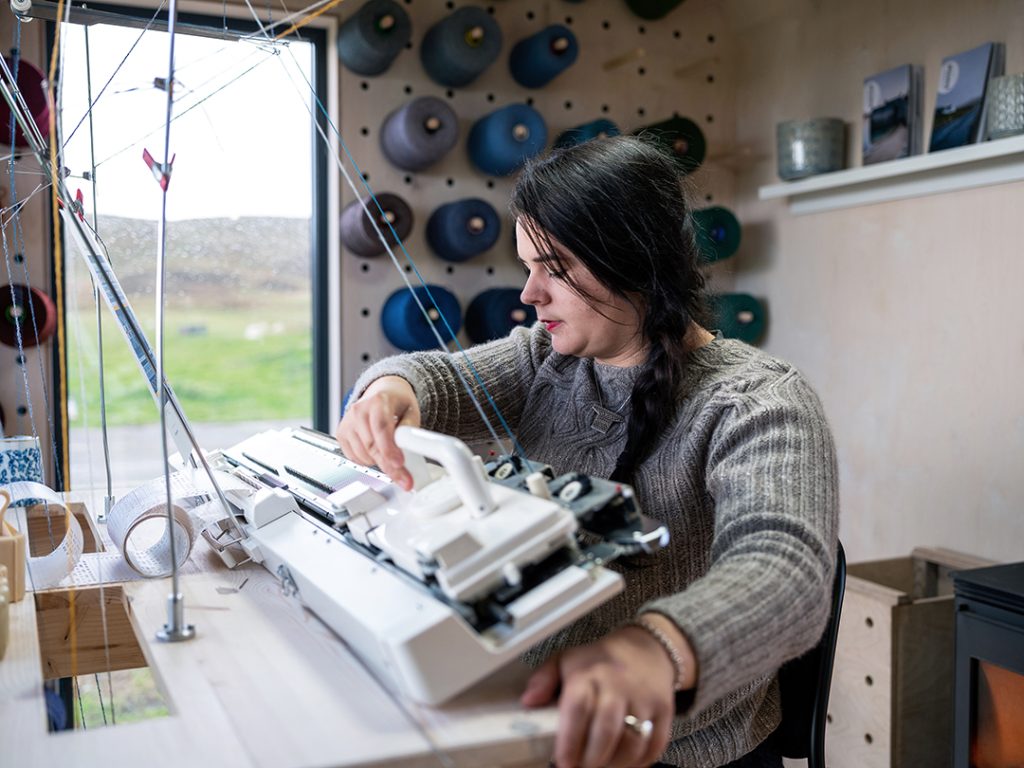
“I live in Fair Isle, which lies midway between Orkney and Shetland. It is three miles long by a mile and a half wide, and is home to just 55 or so permanent residents.
I grew up in Auvergne, in rural France, and despite the region being right in the centre of the country, surrounded by sleepy volcanos, I loved the sea – my favourite holidays were always to Brittany or France’s Atlantic coast.
My parents have always been really supportive in helping me find my own path when others would have just forced me to stay in academic studies.
FINDING MY NICHE
After school, I specialised in textiles for two years, and then focused on knitwear in the last three years of my textile design degree.
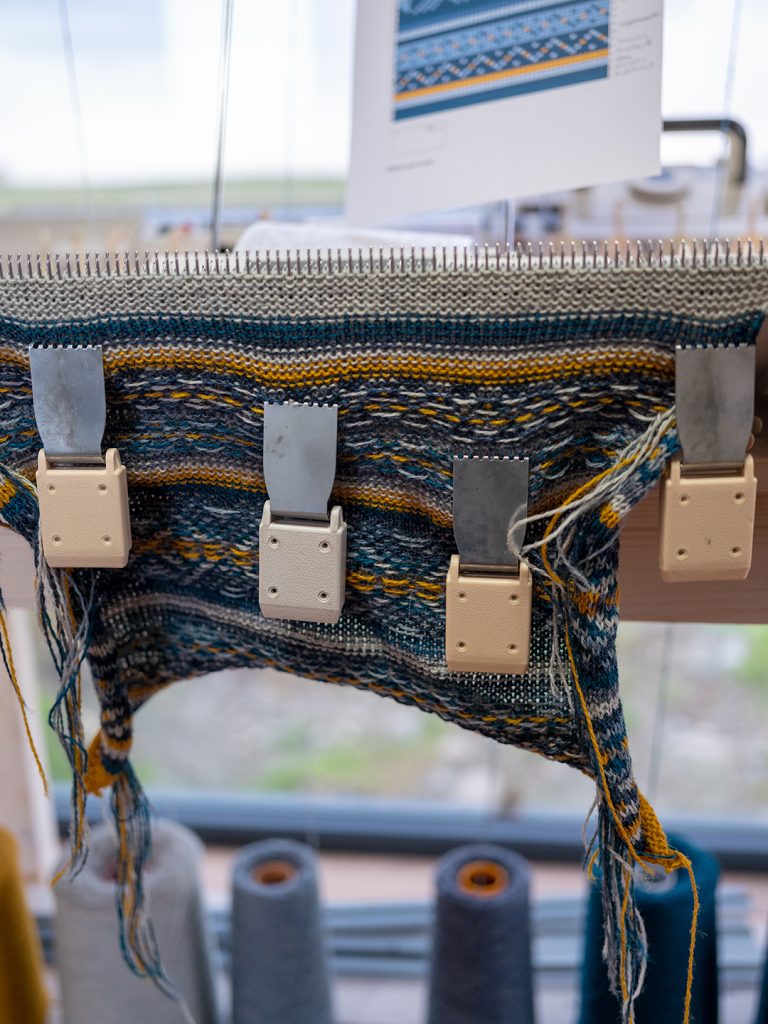
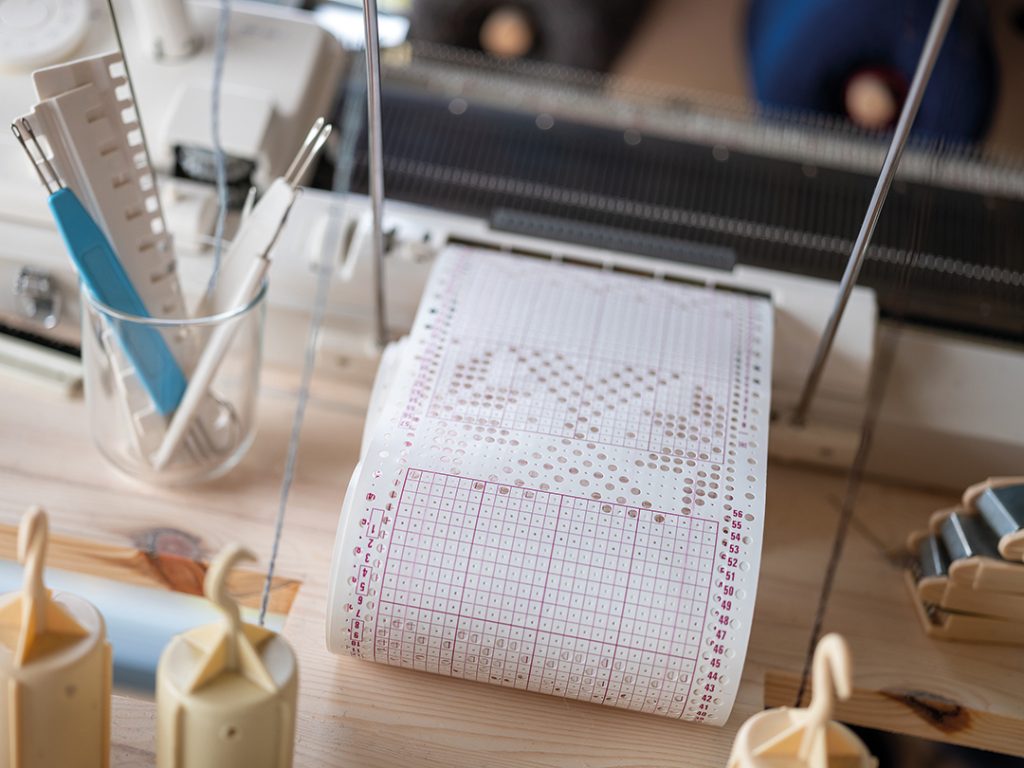
I’d been lucky enough to discover applied art when I was still at school – this was a rare course that was only available in a few high schools in the country.
I think my creativity came with my love for reading books from a very young age and my love of colour and pattern.
The jumpers aren’t my only job. I’m an ‘islander’ so I have a few different things I do.
ISLAND LIFE
I run my own business (made-to-order knitwear and knitting holidays), I have a croft with 50 or so sheep that we look after, and I have a bedroom that I offer as full-board B&B (mainly to my knitting-holiday guests).
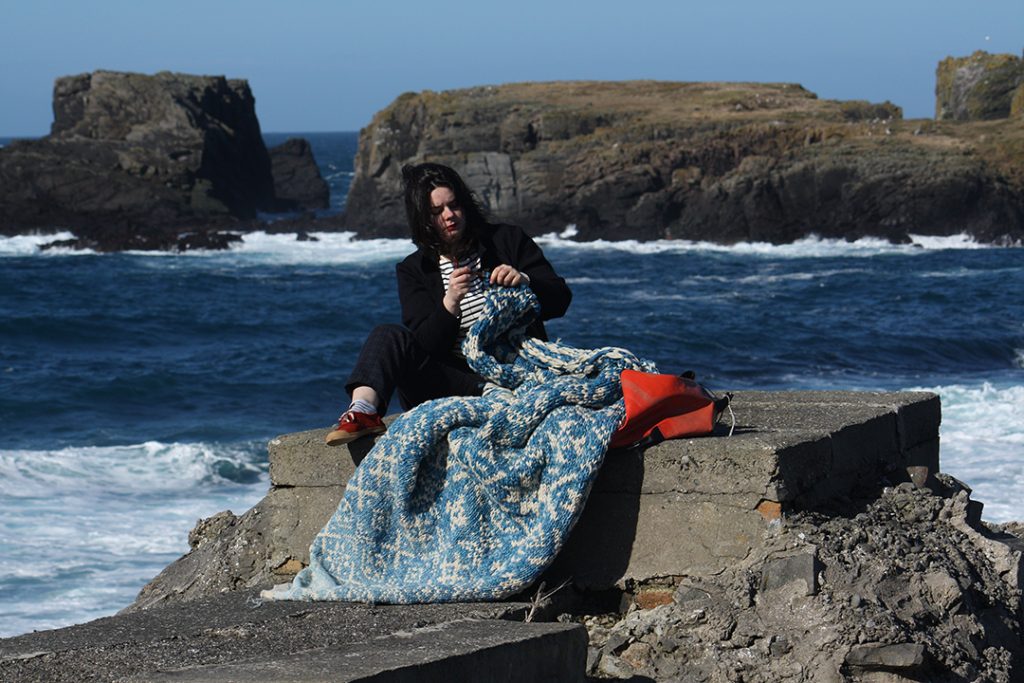
I’m also a retained firefighter at the airport. We take turns to be on duty to ensure planes can take off and land safely.
Every day here is different; I find rhythm through the weather and where I’m needed on the island.
If I’m on plane duty, I’ll go to the airport in the morning and then, if it’s a week when I don’t have guests, I might get to my knitting bothy to design or knit a jumper.
HONING THE CRAFT
Designing a bespoke jumper usually takes between two and four hours of going back and forth with the customer until they are happy with the design, then I draw the garment on a knitting chart.
The knitting is done on a domestic flat-bed knitting machine.
For a medium-size garment with a complex colour-way, it takes me around ten hours to knit the panels.
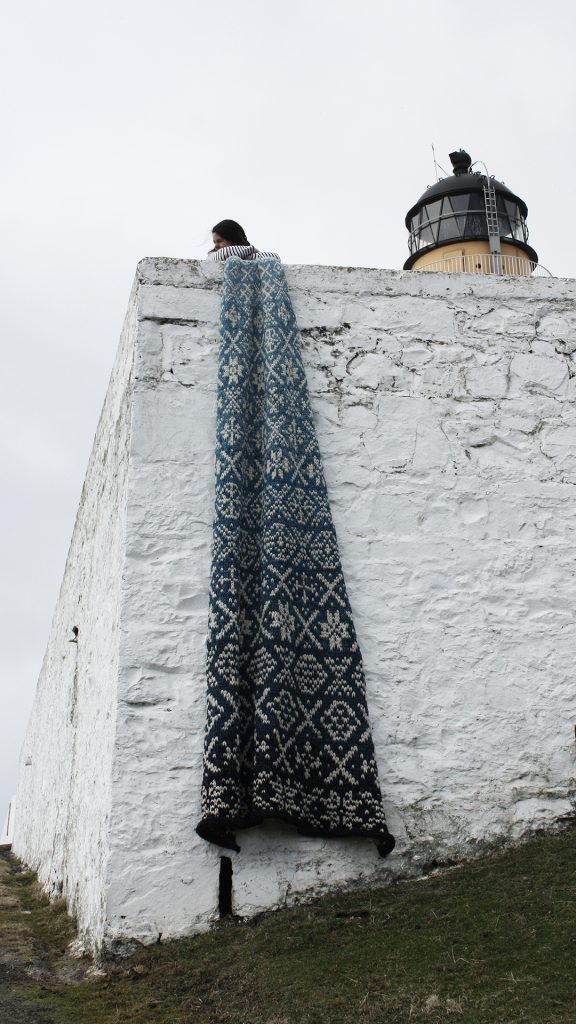
I then finish the garment by hand, or, if I have a lot of orders pending, I will have my friend and neighbour Eileen finish it for me.
The finishing includes the sewing of the panels together, the grafting of the sleeves and neck ribs onto the body of the garment, and cutting the ends of the yarns.
This process usually takes another eight to ten hours.
SUSTAINABILITY FIRST
Sustainability is very important to me and this is why, as a knitwear designer, I decided to become an independent maker; so I could only knit garments that would be worn and not participate to the ecological disaster that is fashion.

I knit on vintage flat-bed machines that don’t use any fuel or electricity, it’s all hand-powered and the only energy that’s required is for the light so I can see the stitches.
The garments are even washed by hand. I only work with a wool supplier based in Shetland, who spins and dyes the wool there.
We sell our sheep fleeces to the supplier, so I like to think 0.001% of the wool I knit with might come from my own sheep!
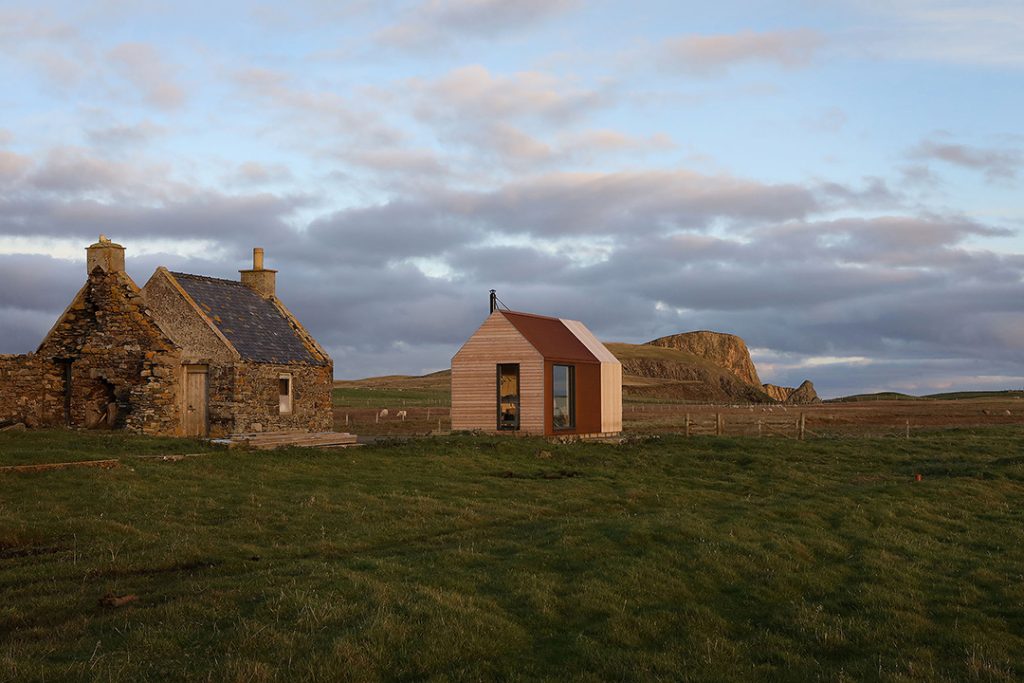
I designed a hat for the Bothy Store crew as a thank-you for building my wonderful studio.
They spent three weeks on the island, putting their life on pause to make my dream come true.
There were four of them and I asked each of them to pick two colours from the hundreds I have here.
I added a few colours myself to help tie them together, and the result was four joyful hats that, hopefully, will be a memory of their time here.
PROTECTING LEGEND
I deeply admire the creativity of past generations of Fair Isle knitters, who endured poverty and difficult living conditions, and who had to work so hard to sustain their families.
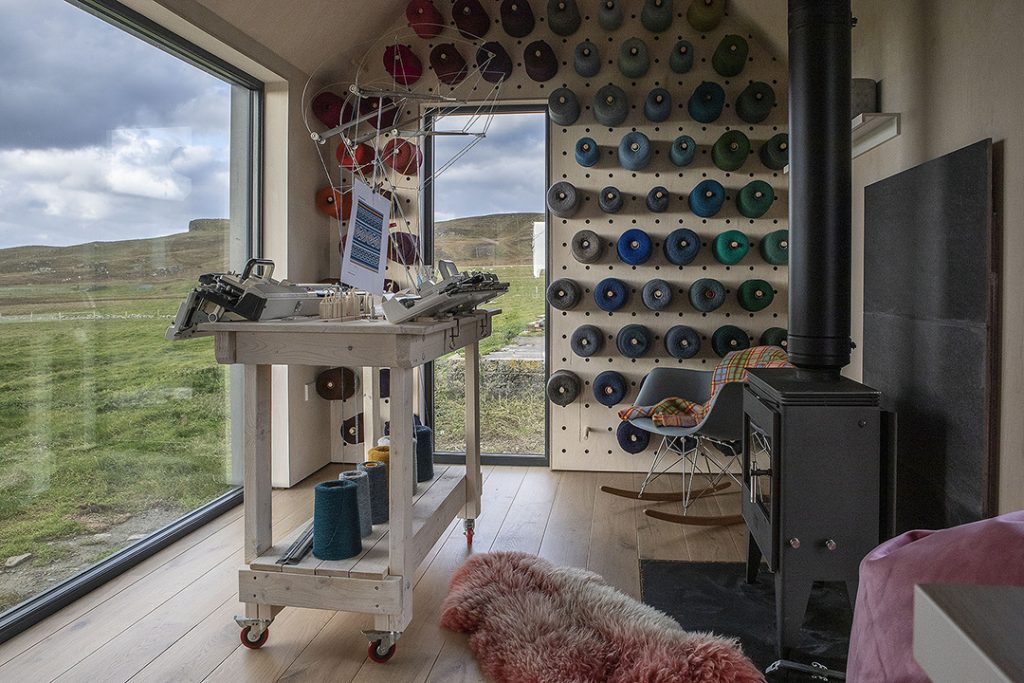
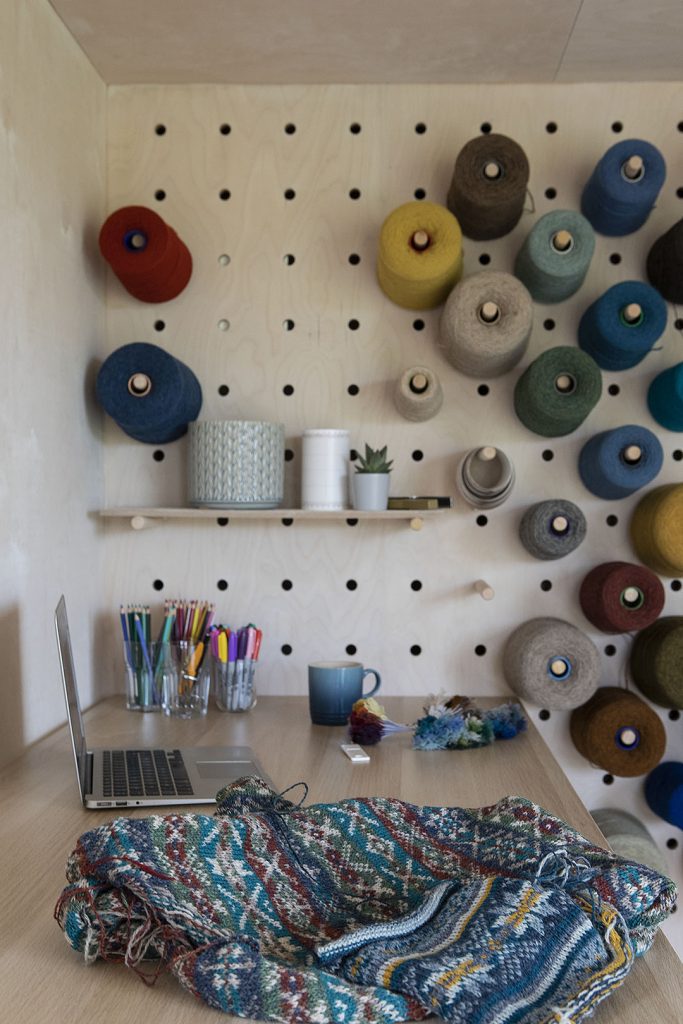
It’s incredible that they were able to produce such intricate and beautiful garments.
I’m very grateful to have the chance to be part of this craft and I take pride in using the traditional patterns they designed decades ago.
Where I take complete freedom and use my own creativity is in the use of colours.
I find inspiration in the island’s flora and scenery but also through looking at artists’ paintings and other art forms.
The best thing about my business is never having to knit the same garment twice.”


